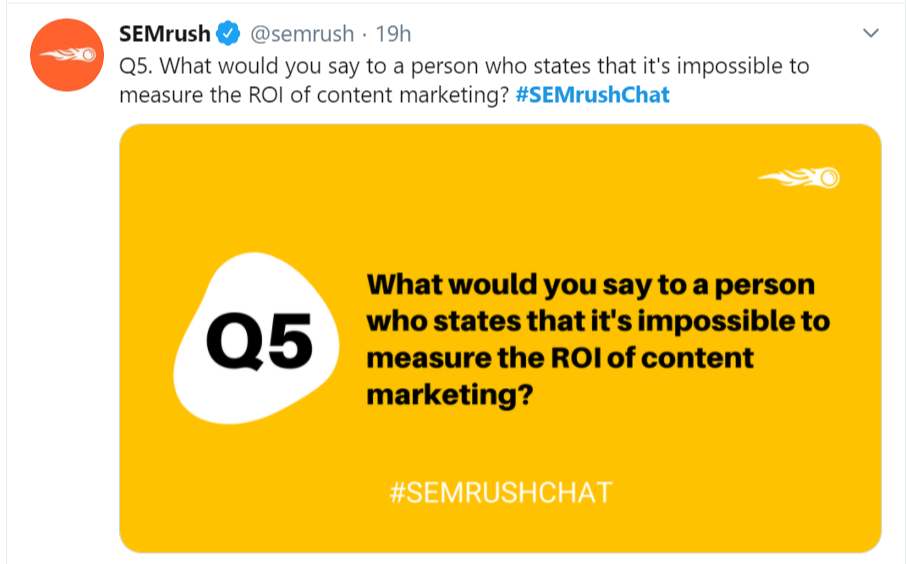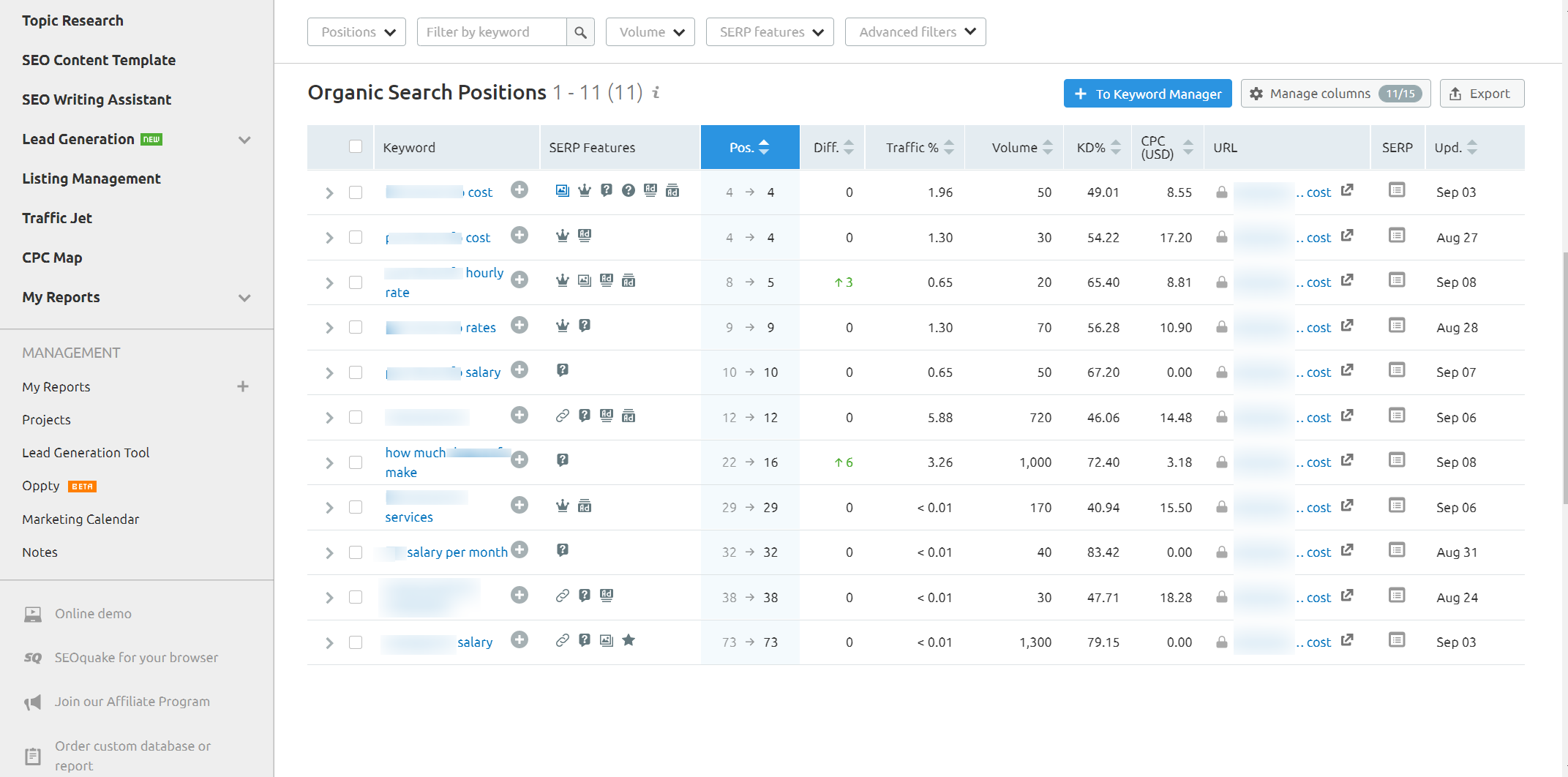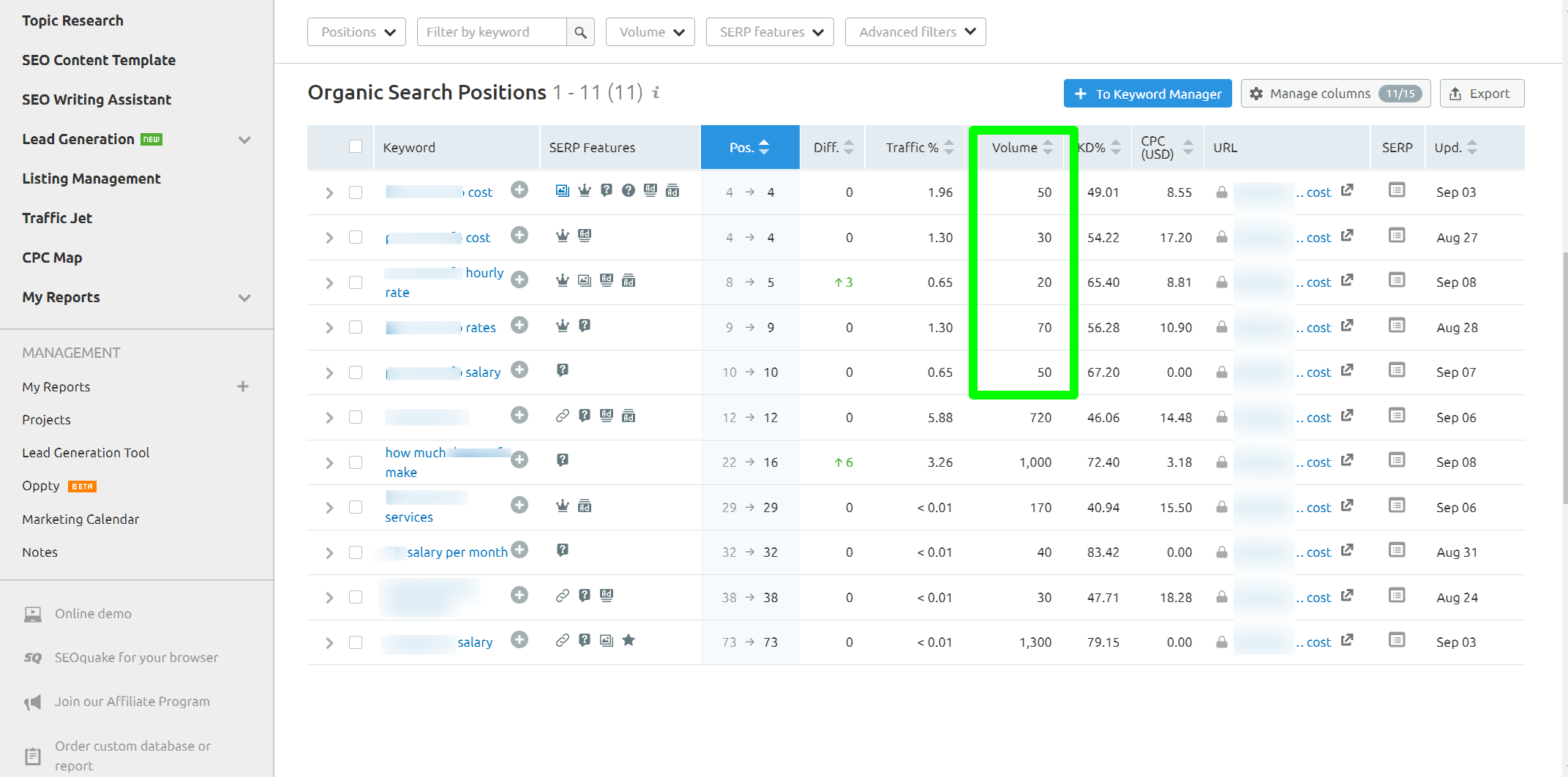Method to Measure the ROI of Content
In a recent #SEMrushchat, it was asked, how would you measure the ROI of content marketing?

Here’s one method of measuring content ROI as taught to me by Dan Shure. I have used this to show proof of content strategy when speaking with clients.
Miniature Case Study
I worked with a gentleman with a small business in the finance sector. He provides several monetary services. One newfangled service in particular was the focus of his immediate attention.
I did initial keyword research and suggested that I compose a piece of content featuring the price or cost of such a service.
In reference to search intent, this would be a commercial investigation. My strategy relayed to the client was that people who potentially need the service will research pricing, so it’s a sound strategy to have the brand supply the answer as well as make an initial impression.
I took note of regular observations. In this case, I especially gave consideration to length and layout given the content would address pricing and cost.
Obviously, there is not a lot of fodder to provide those who are looking for price. Perhaps one could mention cost related to full, part-time, and package services, etc.
Take note of what Martin and Lily discuss in this part of their content conversation. Martin instructs to think of the user’s perspective.
I wrote one piece of content. Here are the results so far:

How to Measure ROI of Produced Content
There are many ways to ”prove your worth” to a client. One way is to show them (via metrics) how content you provided is putting the client in a better position to meet its goals – whether that’s informing the public about a new service, filling-out lead forms, getting people to join an email list, etc.
In the above scenario, I explained how the one piece of content generated multiple keywords/queries related to the on-page information. I added the monthly search volume for the terms ranked in positions 1-10.

Adding the five terms ranking in positions 1-10, I get 220. So, I can relay that the one piece of content is presenting 220 opportunities for a potential client to click-through to the site per month.
Some things to consider:
- You could go further and setup goals in Google Analytics based on users landing on the above page and subsequent behavior.
- You can take credit for a piece of content for ranking in itself, for depending on your role in the larger scope of things, there could be things out of your control that inhibits a user from staying on the site, filling-out a contact form, etc. The site could look dated, other pieces of content could send negative signals to a potential buyer, etc. The above allows you to take credit for elements you can control.
Read More Muse:

Leave a Reply
Want to join the discussion?Feel free to contribute!